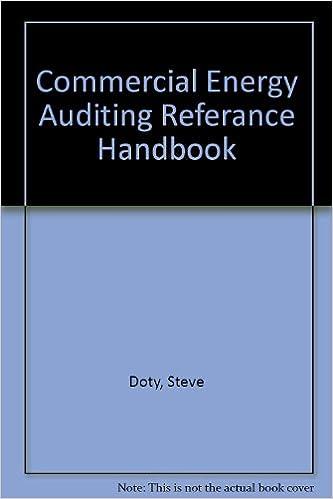Answered step by step
Verified Expert Solution
Question
1 Approved Answer
6 Williams-Santana, Inc., is a manufacturer of high-tech industrial parts that was started in 2006 by two talented engineers with little business training. In 2018,










6
Williams-Santana, Inc., is a manufacturer of high-tech industrial parts that was started in 2006 by two talented engineers with little business training. In 2018, the company was acquired by one of its major customers. As part of an internal audit, the following facts were discovered. The audit occurred during 2018 before any adjusting entries or closing entries were prepared. The income tax rate is 40% for all years. a. A five-year casualty insurance policy was purchased at the beginning of 2016 for $30,500. The full amount was debited to insurance expense at the time. b. Effective January 1, 2018, the company changed the salvage values used in calculating depreciation for its office building. The building cost $574,000 on December 29, 2007, and has been depreciated on a straight-line basis assuming a useful life of 40 years and a salvage value of $110,000. Declining real estate values in the area indicate that the salvage value will be no more than $27,500 c. On December 31, 2017, merchandise inventory was overstated by $20,500 due to a mistake in the physical inventory count using the periodic inventory system d. The company changed inventory cost methods to FIFO from LIFO at the end of 2018 for both financial statement and income tax purposes. The change will cause a e. At the end of 2017, the company failed to accrue $14,600 of sales commissions earned by employees during 2017. The expense was recorded when the commissions were paid in early 2018. f. At the beginning of 2016, the company purchased a machine at a cost of $630,000. Its useful life was estimated to be ten years with no salvage value. The machine has been depreciated by the double-declining balance method. Its book value on December 31, 2017, g. Warranty expense is determined each year as 1% of sales. Actual payment experience of recent years indicates that 0.80% is a better indication of the actual cost. Management effects the change in 2018. Credit sales for 2018 are $3,100,000; in 2017 they were $2,800,000. $915,000 increase in the beginning inventory at January 1, 2019. was $403,200. On January 1, 2018, the company changed to the straight-line method. Required 1 Required 2 Identify whether it represents an accounting change or an error. If an accounting change, identify the type of change. For accounting errors, choose "Not applicable" Event Type of change Not applicable Change in estimate Not applicable An error a. An accounting change b. An error C. An accounting change Change in accounting principle Not applicable d. An error e. An accounting change An accounting change Change in estimate resulting from a change in accounting principle f. ..... ... Change in estimate g. C Prepare any journal entry necessary as a direct result of the change or error correction as well as any adjusting entry for 2018 related to the situation described. Any tax effects should be adjusted for through Income tax payable or Refund-income tax. (If no entry is required for a transaction/event, select "No journal entry required" in the first account field.) View transaction list Journal entry worksheet 2 3 4 5 6 7 14 1 Record entry necessary as a direct result of the change or error correction Note: Enter debits before cred its. Transaction General Journal Debit Credit Prepaid insurance a(1) Income tax expense Retained earnings 1 3 4. 5 6 7 8 14 2 Record adjusting journal entry for 2018. Note: Enter debits before cred its Transaction General Journal Debit Credit Insurance expense a(2) Prepaid insurance View general iournal Record entry Clear entry 6 1 2 3 5 7 8 14 4 Record adjusting journal entry for 2018. Note: Enter debits before credits. General Journal Transaction Debit Credit Depreciation expense b(2) Accumulated depreciation 2 3 6 7 14 5 or error correction Record entry necessary as a direct result of the change Note: Enter debits before cred its General Journal Transaction Debit Credit Retained earnings c(1) Refund-income tax Inventory 5 1 2 8 14 7 Record entry necessary as a direct result of the change or error correction. Note: Enter debits before credits. Transaction General Journal Debit Credit Inventory d(1) Income tax payable Retained earnings 7 10 11 12 14 9 Record entry necessary as a direct result of the change or error correction Note: Enter debits before credits Transaction General Journal Debit Credit Retained earnings e(1) Refund-income tax Compensation expense 10 7 11 14 12 Record adjusting journal entry for 2018. Note: Enter debits before cred its Transaction General Journal Debit Credit Depreciation expense f(2) Accumulated depreciation
Step by Step Solution
There are 3 Steps involved in it
Step: 1

Get Instant Access to Expert-Tailored Solutions
See step-by-step solutions with expert insights and AI powered tools for academic success
Step: 2

Step: 3

Ace Your Homework with AI
Get the answers you need in no time with our AI-driven, step-by-step assistance
Get Started


